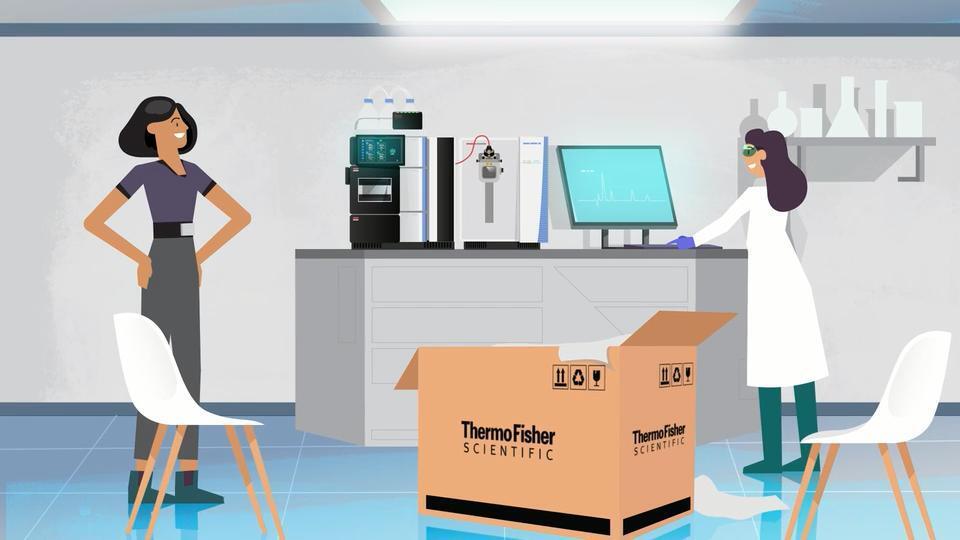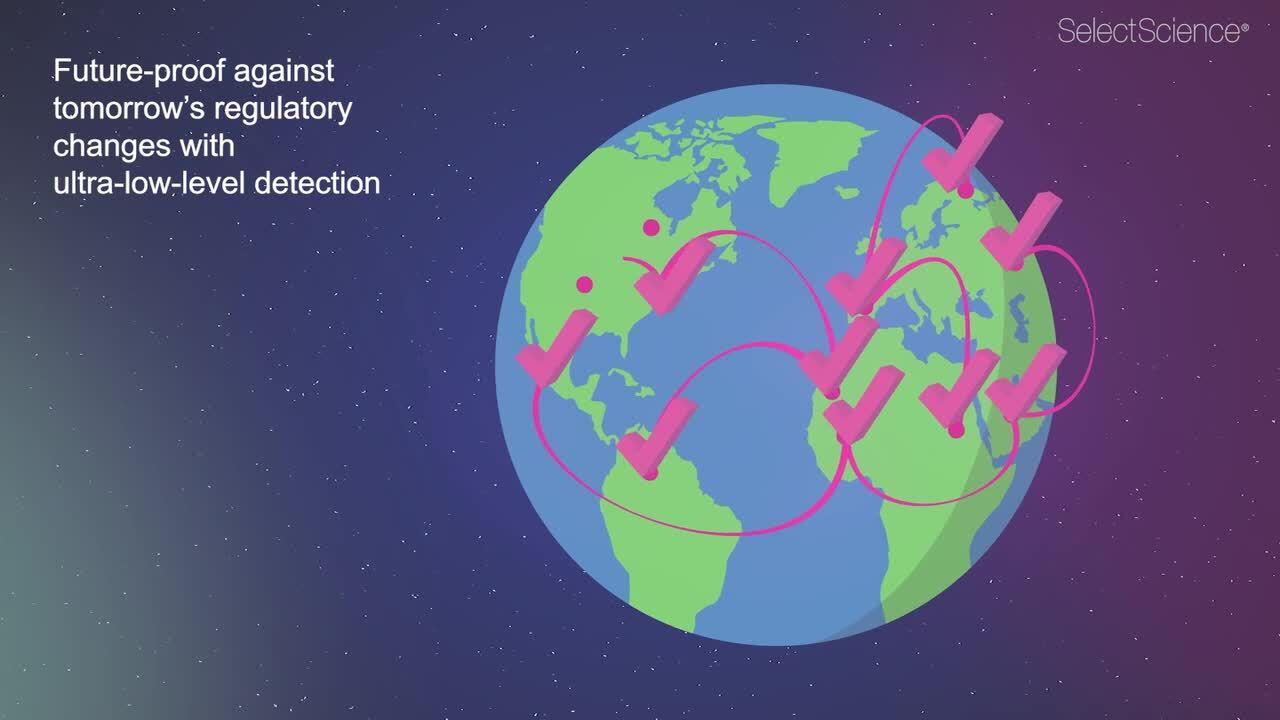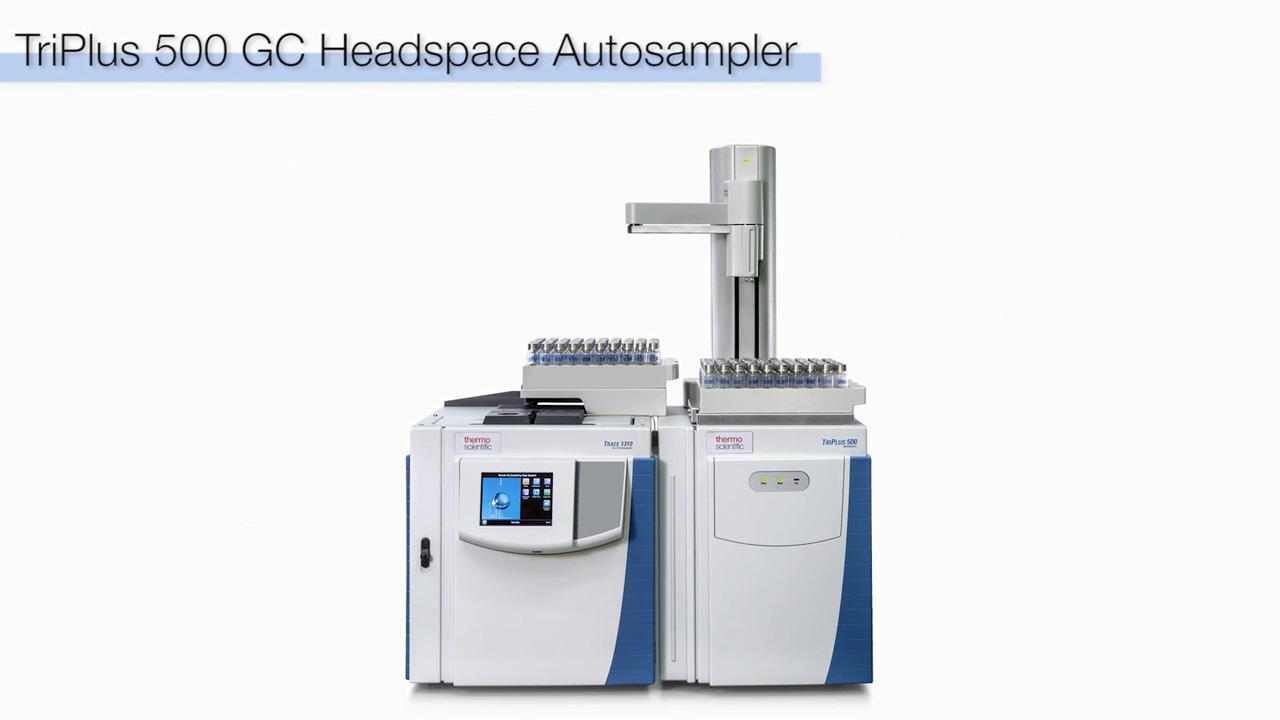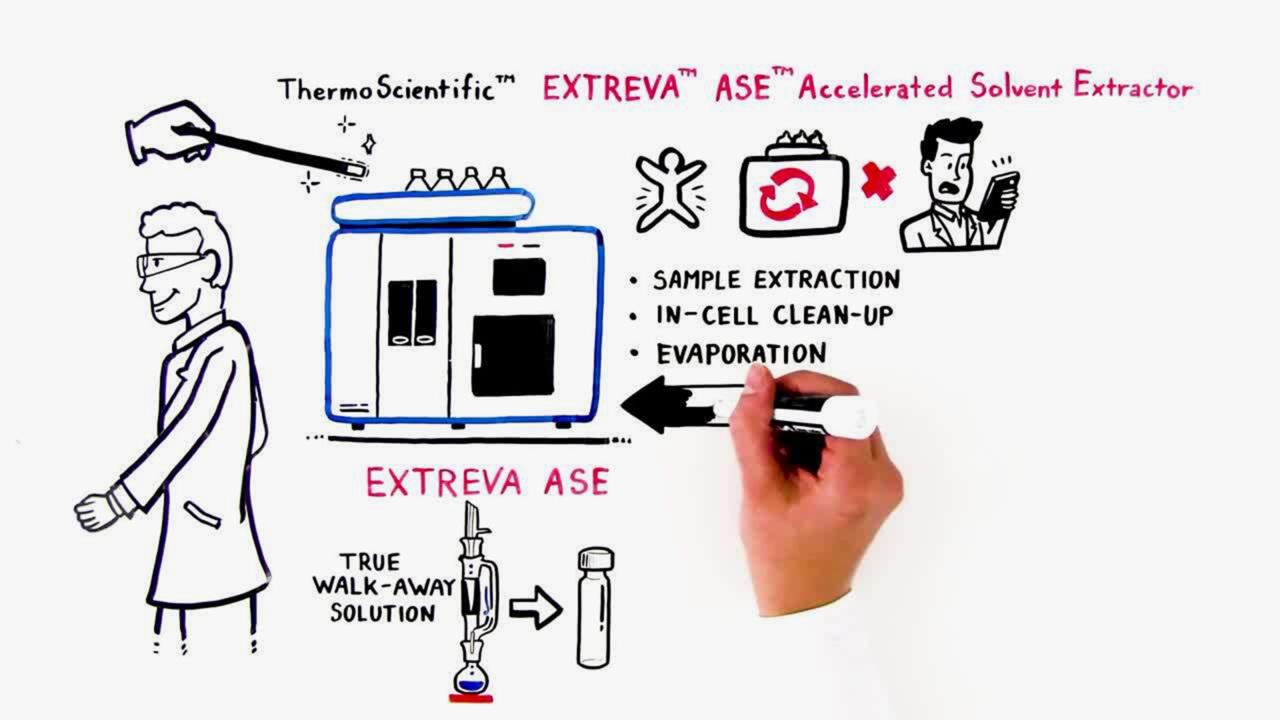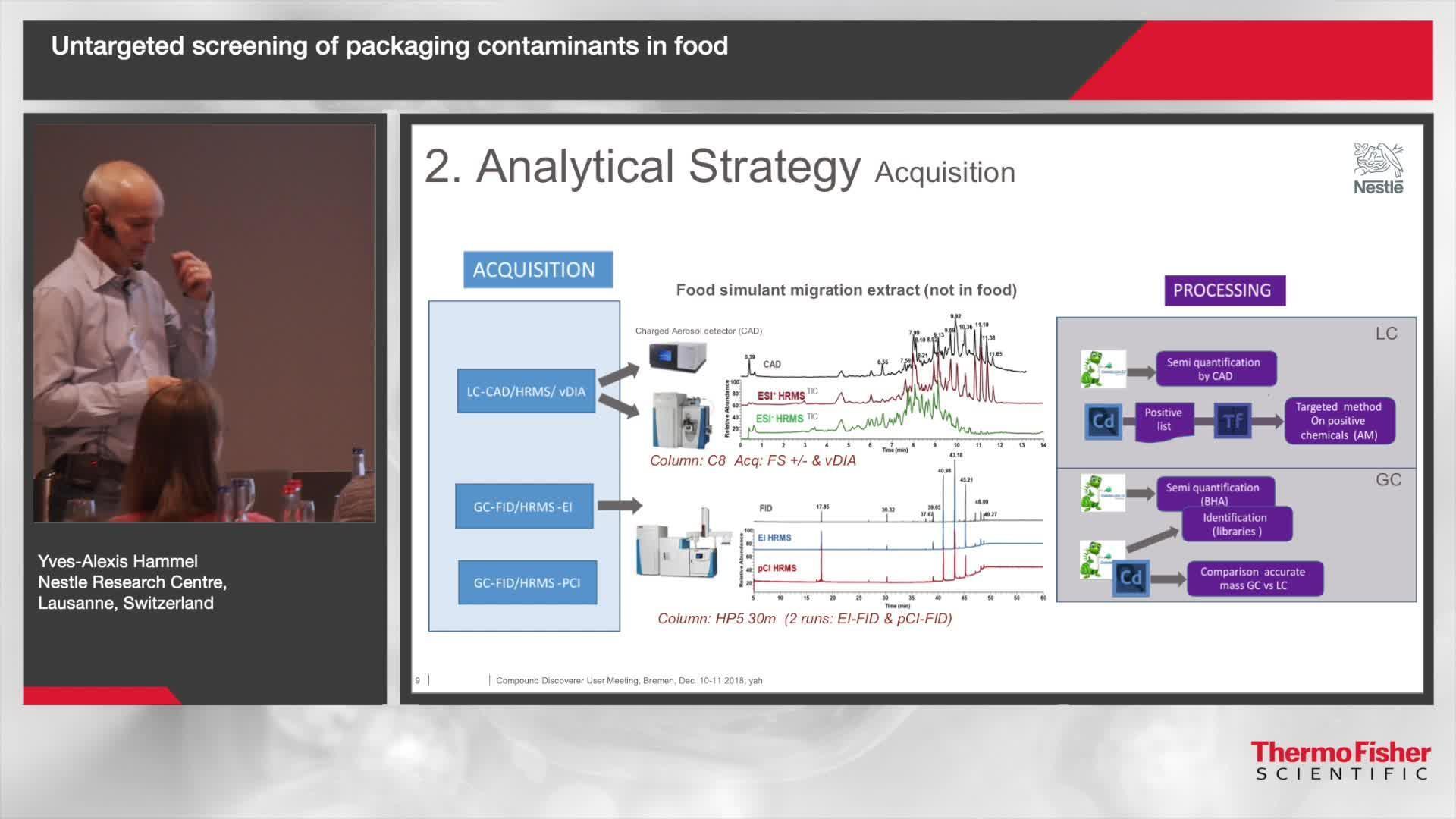Search Thermo Fisher Scientific
Food Contact Materials and Packaging Migration

Identify unwanted chemicals that may migrate to food products
We can help you carry out food packaging migration and contact materials testing to ensure products are safe and comply with the appropriate regulations. All food contact materials, from manufacturers’ packaging to crockery and cutlery, glassware, ceramics, and storage containers should be tested to ensure they do not leach unwanted chemicals or transfer materials into foodstuffs at unsafe levels.
We offer tools and resources to help optimize your analytical testing to protect your brand and consumer health from phthalates, Bisphenol A, Benzophenone, polycyclic hydrocarbons, nitrosamines, trace elements, and more.
For More Information
Food for thought: Experts discuss the latest in food contact materials testing and unintended contaminant testing
On this page
Workflows for food contact material and packaging migration analysis
We offer advanced technologies and smarter functionality to enable your team to analyze or investigate a variety of food contact materials and packaging migration concerns arising from processing, transport, storage, packaging, handling, and cooking.
Fast, high-throughput, targeted UHPLC-MS/MS assay for the determination of acrylamide from foodstuffs
This simple, robust two-stage extraction for the quantitation of acrylamide from food matrices removes fats and more lipophilic compounds during the first step of sample extraction. The elution solvent mixture used for the second step ensures a clean extract, excellent recovery and no ion suppression in a range of matrices. The improved sample clean-up eliminates matrix effects and ensures high recovery with run times as short as 4.5 minutes for a wide range of foodstuffs.
Simple and cost-effective determination of acrylamide in food products and coffee using gas chromatography-mass spectrometry
This method offers a viable, GC-MS-based alternative to current methods for analyzing low-level contaminants, such as acrylamide, in food and coffee samples, from sample extraction to detection and quantification.

Average concentration of acrylamide (n=3) using standard addition calibration determined for unspiked and spiked (1000 and2000 μg/kg) potato crisp, and instant and ground coffee samples, showing consistency at low and high levels. Standard deviation calculated from the three replicates is annotated, demonstrating the repeatability of the method.
Selective ion monitoring (SIM) GC-MS workflow to improve determination of phthalates in vegetable oil
One of the major challenges for laboratories that test for phthalates in foods is the analysis of fatty matrices such as cooking oils. These complex mixtures of triacyl glycerides present a challenge to the selectivity, sensitivity, and robustness of GC-MS analysis. When using full scan acquisition, it is difficult to selectively detect phthalates, such as DEHP, from the background ions. Using selective ion monitoring mode (SIM) significantly improves selectivity and sensitivity, despite the complexity of analyzing for phthalates in vegetable oil.
Reliable, routine quantitation of phthalates in liquor beverages by single quadrupole GC-MS
Detect trace levels of phthalate plasticizer residues in highly alcoholic beverages. This study is a validation of a complete workflow for the determination of phthalate esters in alcoholic beverages. The method delivers high recovery and sensitivity for reliable routine quantitation. Sample preparation method, using n-hexane as an extraction solvent, provides consistently high recoveries after removal of most methanol, even at trace levels. The Thermo Scientific ISQ Series GC-MS system method set-up using full-scan has good usability, provides the necessary high sensitivity, and delivers the complete spectrum information for identification and confirmation of a wide variety of possible phthalate ester contaminations by comparison with the NIST mass spectral library.
Rapid qualitative and quantitative analysis of residual solvents in food packaging by static headspace coupled to GC-FID/MS
This method enables compliance with the EN13628-1:2002 standard method using a workflow suited to routine in-house and contract testing laboratories. Our solution provides integrated MHE data processing for easy and automated quantitative data reporting, eliminating the need for the external data manipulation. Full-scan data is used to putatively confirm the identity of detected solvent impurities, increasing the confidence in compound identification.
FID and TIC (full-scan, EI at 70 eV) traces for reference standard and corresponding MHE calibration curves for selected compounds (left to right: methanol, ethanol, acetone, ethyl acetate, toluene, and cyclohexanone) as examples. Calibration curves were obtained by plotting the natural logarithm of peak area responses (total vaporization MHE) versus the corresponding MHE extraction step.
Overview of Regulations, Analysis and Trends in Food Contact Materials Analysis
Chemicals and metals can transfer from food contact materials into the foods we eat during steps throughout the production process. Regulations governing these chemicals are complex, but diverse analytical techniques provide effective tools for monitoring chemical migration into food products, ensuring food safety.
Solutions for food contact materials and packaging migration analysis
The analysis and identification of packaging impurities involves the detection of a diverse range of chemicals; from volatiles to high molecular weight non-volatile molecules, and even metals. These compounds must be monitored due to their toxicity to humans and animals. Targeted and non-targeted packaging migration and food contact material testing is used to identity these compounds, using our wide range of intelligent, connected chromatography-mass spectrometry techniques, data analysis options, and automation solutions.
Improve sample preparation and reduce turnaround time while significantly reducing the cost per analysis with solutions designed to offer ease, uptime, and hands-free automation. When analyzing organic volatiles in food contact materials, the addition of headspace autosamplers to GC and GC-MS workflows can increase sample turnaround time and lower costs for high-throughput laboratories.
Automate organic volatile testing of food packaging materials to increase sample turnaround and reduce the cost per analysis. With its valve-and-loop system, the Thermo Scientific TriPlus 500 GC Headspace Autosampler offers fast startup, high productivity, and maximum flexibility for any lab analyzing organic volatiles in food contact materials by GC or GC-MS. This comprehensive sample handling solution is ideal for regulated food safety applications.
The Thermo Scientific TRACE 1610 GC is the best choice for larger food testing laboratories and research organizations testing for migration in food packaging. This robust GC system features a full touch screen user interface for easy instrument control, status monitoring, and on-instrument method development. User-interchangeable Thermo Scientific iConnect injector and detector modules help your lab maximize uptime and flexibility.
Perform routine food contact material testing using the ISQ 7610 Single Quadrupole GC-MS System. This GC-MS system offers time-proven performance and productivity, where full scan and SIM mode is simultaneous in one injection for qualitative and quantitative analysis. The ISQ system’s source design provides continuous high-throughput operation with nonstop productivity.
Manage the entire food contact material testing laboratory process—from instrument control, to raw data storage and processing, right through to generating the final results—using gold-standard chromatography software.
Thermo Scientific AppsLab Library of Analytical Applications
Search online by compound, technology, or market specialty for a variety of quick start analytical methods featuring Thermo Scientific products and workflows.
Featured volatile analysis resources
Brochures
Semi-volatile organic impurities include a complex range of chemicals that often require high selectivity and sensitivity for identification and quantification. High-resolution, accurate-mass (HRAM) mass spectrometry offers an ideal solution. HRAM mass spectrometry can resolve interferences to provide clean spectra and enable confident identification of unknowns while achieving accurate quantification at the lowest levels.
Accurate, repeatable sample preparation and sample introduction are essential to achieving the highest quality GC and GC-MS results when analyzing for food contact materials and food packaging migration contaminants. The Thermo Scientific TriPlus RSH SMART Autosampler automates this whole workflow—from standard dilution to injection—to improve the precision and reproducibility of your data, as well as the productivity of your lab.
Get comprehensive, high confidence discovery, identification, and quantitation of food contact materials and packaging migration samples from a single analysis. The Thermo Scientific GC Orbitrap GC-MS/MS offers the quantitative power of a GC triple quadrupole MS combined with the high precision, full scan high resolution accurate mass (HRAM) capabilities. This system is ideal for the analysis of non-intentionally added substances (NIAS), phthalates in food, and bisphenol A (BPA) in canned food and beverages.
Use the Thermo Scientific TraceFinder software with HRAM and/or triple stage quadrupole (TSQ) mass specftometers in targeted screening and routine quantitation. This software is highly flexible, ensures increased productivity, and enables you to address the analytical challenges of today and tomorrow.
Simplify data processing for food contact materials and packaging migration testing. Strategically collect, organize, store, and report data for both targeted and untargeted high-resolution analyses using Thermo Scientific Compound Discoverer software. Compound Discoverer software allows you to export your data directly to a new or existing mzVault library or targeted list to be used with Thermo Scientific TraceFinder software for screening and quantitation to reduce the burden of method transfer within your organization and seamlessly enable targeted analysis.
Confidently identify unknown unknown compounds when reference standards are not available using the mzCloud mass spectral library.
Featured semi-volatile analysis resources
Brochures
Application note
Non-volatile food contact material compounds, such as phthalates, are among the most challenging chemicals to identify. We offer benchtop LC-MS/MS systems that combine UHPLC with quadruple precursor ion selection and high-resolution, accurate-mass (HRAM) detection to enable you to identify and confirm more compounds rapidly and with confidence.
This high-end UHPLC is the new standard in UHPLC, delivering more results with better separations and easier interaction simultaneously, without compromise. A fully integrated system, the Thermo Scientific Vanquish UHPLC system features high sample capacity for high throughput workflows in busy food testing laboratories.
Identify and confirm more compounds rapidly and with confidence for polymer additives and monomers in food and food packaging analysis. This benchtop high-resolution LC-MS system combines industry leading chromatography with quadruple precursor ion selection and HRAM Orbitrap technology to deliver exceptional performance and versatility.
Simplify data processing for food contact materials and packaging migration testing. Strategically collect, organize, store, and report data for both targeted and untargeted high-resolution analyses using Thermo Scientific Compound Discoverer software. Compound Discoverer software allows you to export your data directly to a new or existing mzVault library or targeted list to be used with Thermo Scientific TraceFinder software for screening and quantitation to reduce the burden of method transfer within your organization and seamlessly enable targeted analysis.
Confidently identify unknown unknown compounds when reference standards are not available using the mzCloud mass spectral library.
Use Thermo Scientific TraceFinder software with HRAM and/or triple stage quadrupole (TSQ) mass spectrometers in targeted screening and routine quantitation. The software is highly flexible, ensures increased productivity, and allows you to address analytical challenges today and tomorrow.
Featured non-volatile analysis resources
Brochures
Application note
Complete characterization and identification of small molecules is an important task, whether it is for better understanding of how our bodies interact with drugs, tracing the environmental fate of pesticides, developing new compounds, protecting brand reputations, or performing fundamental research. Learn more when you download our eBook.
Elemental impurities are common in printed materials, pigments, foil packaging, and delivery systems. Meet the most challenging regulatory requirements for trace metals analysis in packaging migration and food contact materials.
Expand your analytical capabilities and maximize productivity and robustness of your high-throughput lab using the Thermo Scientific iCAP RQplus ICP-MS system. This complete trace elemental analysis solution is especially ideal for analyzing nanoparticles in food packaging. The system’s simplicity and ease-of-use work in concert to streamline workflows and achieve right-first-time results, which is essential to all busy food safety and beverage labs.
Minimize training, automate workflows, simplify your experience, and improve efficiency. Designed for workflow, scalability, compliance and data management, Thermo Scientific Qtegra ISDS software provides essential tools for consistent, accurate analysis.
Featured elemental impurities resources
Brochures
Application note
Sample extraction with walk-away capability to produce uncompromised results
Traditional Soxhlet extraction or reflux techniques, used routinely for extractables and leachables testing, are labor-intensive and often double the time spent on chromatography experiments. These methods typically require more than 24 hours for extraction and large quantities of solvent (>150 mL/sample).
| Time savings | |
|---|---|
| Technique | Average Extraction Times* |
| Soxhlet | 4 – 48 h |
| Automated Soxhlet | 1 – 4 h |
| Sonication | 0.5 – 1 h |
| SFE | 0.5 – 2 h |
| Microwave | 0.5 – 1 h |
| Dionex ASE 350 | 0.2 – 0.3 h |
| Solvent savings | |
|---|---|
| Technique | Solvent Usage* |
| Soxhlet | 150 – 500 mL |
| Automated Soxhlet | 50 – 100 mL |
| Sonication | 150 – 200 mL |
| SFE | 5 – 50 mL |
| Microwave | 25 – 50 mL |
| Dionex ASE 350 | 5 – 200 mL |
Use the Thermo Scientific EXTREVA ASE system to save time and solvent, and get comparable or more efficient solvent extractions from your food packaging materials compared to traditional Soxhlet methods. Conditions can be controlled to ensure that the material is not deformed or damaged during extraction.
Featured sample extraction resources
Videos
Find interactive tools and calculators, guides to select the right products, equivalent product finders, and get in contact with our consumables technical support team to answer your application questions.
How to screen and identify unexpected and unwanted compounds in food and packaging materials
Learn how to develop a non-targeted workflow to screen for unexpected and unwanted substances in food for several compound classes.




























